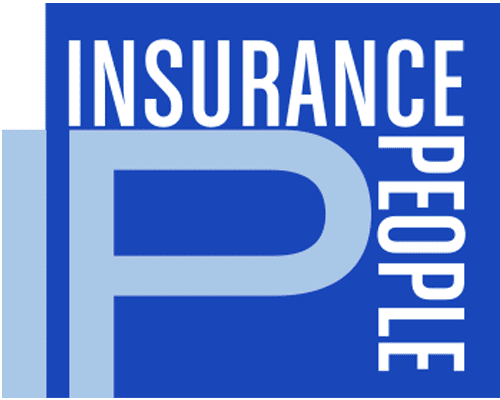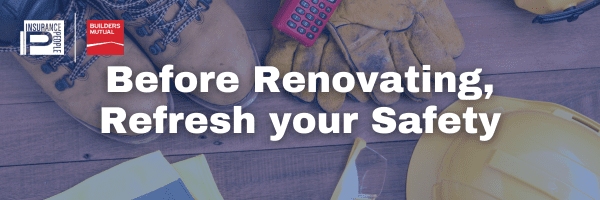Our friends at Builders Mutual Insurance Company provided us with the below information regarding renovation safety. We are thankful to Builders Mutual Insurance for continually providing us valuable information that we can share with you all. Below is the blog from Builders Mutual.
When a property owner chooses to remodel instead of building from scratch, contractors also need to adapt their approach – including how they’ll safeguard workers. Renovation presents distinct challenges that may not be present in new construction.
Adam DeVantier, Senior Risk Management Consultant at Builders Mutual, shares his top safety tips for renovating. This advice applies to both residential and commercial buildings, although larger buildings tend to be more complex structures.
Know Your Systems
Prior to any renovation job, it’s critical to understand a property’s underlying systems. Unlike new construction, an existing building already has active systems in place, including water, gas, electrical, and data lines.
Pinpointing the location of these systems is key to safety. Cutting into a wall blindly could sever a water or gas leak, resulting in leaks and even explosions. Get your hands on the property’s blueprints to identify the position of existing utilities. Otherwise, smart utility locators – tools resembling stud finders – can help you detect utility lines behind walls, floors, or ceilings. Call 811 to have existing underground utilities identified and marked prior to any digging.
Identify Your Property’s Materials
In remodeling older buildings, construction workers risk exposure to several materials that were once commonplace but have since been banned. For example, pre-1978 construction used lead-based paint, which can be harmful to adults and children. And until the 1980s, many buildings used asbestos, a mineral that can cause cancer later in life.
Sanding, cutting, and demolition can create hazardous lead dust or cause asbestos fibers to release into the air. That’s why OSHA and the Environmental Protection Agency (EPA) have developed specific rules aimed at preventing exposure to lead-based paint and asbestos.
Oftentimes, the safest way to work with lead-based paint or asbestos-containing materials is to hire a professional abatement contractor. They are properly trained to identify and remove these hazardous materials according to state and federal standards.
Many of today’s construction materials such as concrete, stone, brick, grout, mortar, and cement fiber board also contain potentially dangerous particles like silica. Workers who inhale silica particles are at risk of developing silica related diseases including silicosis, lung cancer, chronic obstructive pulmonary disease (COPD) and kidney disease. This OSHA Fact Sheet outlines steps employers can take to protect workers from potential silica exposures.
Inventory Your Tasks
Safety takes planning. When you begin a remodeling project, list the kinds of activities that your workers will perform, so you can have the proper safety protections in place.
For example, if you know that demolition work will produce dust, make sure your workers have the proper personal protective equipment, including appropriate dust masks or respiratory protection, goggles, gloves, and coveralls. You may also need to construct a containment area by applying plastic sheeting to the floor and other surfaces to prevent contaminating the building interior or exterior. If the work produces heat, sparks or flames, a hot work permit and a fire watch should be used.
Once you know the tasks, it’s important to communicate your plans and potential health and safety exposures to all affected groups, such as occupants in other parts of the building. You should keep these groups informed about the length of the renovation activities, any site access limitations, and health and safety aspects of the project.
At the end of the day, don’t forget to leave your work area clean:
- Pick up trash as you go
- Clean tools and your PPE and replace them as needed
- Use a HEPA vacuum cleaner frequently or at least at the end of the day
Invest in the Right Tools and Equipment
As with any construction project, you want to supply your crews with the tools and equipment that will help them do the job safely and more effectively.
For a remodeling job, that may mean investing in an oscillating tool to remove dry wall instead of a sledgehammer. The latter may be more cost-effective, but using a sledgehammer repeatedly could result in unnecessary strain or injury and damage to water, gas, or electrical lines.
Likewise, you should purchase PPE ahead of time so you aren’t tempted to start a task without the proper safety equipment. If your crew is handling materials with sharp, jagged edges, projecting nails or splinters, have a few quality hand protection options available: a thicker leather pair that will protect from cuts and lacerations and another tight-fitting glove that offers good dexterity to allow the use of hand and power tools.
If you need help identifying safety hazards at your remodel job-site – or the kinds of PPE your workers may need – Builders Mutual risk management consultants are here to help. We can perform an on-site job safety analysis and help you come up with a safety plan that can prevent injuries and property damage.
Thanks again to Builders Mutual for this valuable information on renovation safety.

